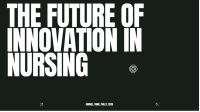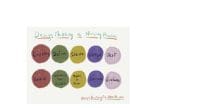During a recent clinical orientation with a group of about 170 nursing students, I projected a slide bearing a well-known photo of Florence Nightingale, and asked “Who knows this woman?” Only about eight hands rose—tentatively.
The inability of current nursing students and recent graduates to recognize the founder of clinical nursing may stem from deficient teaching about the collective history of nursing. This underscores the disconnect between modern nursing education and the historical evidence showing that the future of nursing is rooted deeply in its past. This article offers “notes” on Nightingale’s writing and ideas on selected topics.
Advocate for reform
An inveterate writer of extraordinary skills, Nightingale is credited with writing more than 200 books and innumerable notes and letters. Through her brilliant power of exposition, she gave nursing a prominence the profession previously lacked. When she wrote in the 1860s about inadequate preparation of nurses, the nursing shortage, and lack of government support, she was, in a sense, writing about the future of nursing and its vicissitudes. Her terse phrasing, wit, and intelligence made whatever reform she was advocating ever more urgent and utterly readable.
A modern reading of Nightingale’s writings allows us to commune with her great mind and contextualize her experiences. In her most famous work, Notes on Nursing: What It Is and What It Is Not, she advised readers, “Let experience, not theory, decide upon this as upon all other things.” Evidence-based practice is the offspring of experience and critical analysis. In both areas, Nightingale excelled.
From words to action to results
Nightingale’s knowledge of physiology was limited and some of her ideas make no sense to us today. For instance, she wrote, “to the large majority of very weak patients it is quite impossible to take any solid food before 11 A.M.” Today, her ideas are seen as practical rather than scientific.
In Florence Nightingale: The Making of an Icon, author Mark Bostridge writes, “She was unconcerned with the finer points of medical theory.” She disregarded the germ theory until 1882, when she urged nurses to use antiseptic precautions. This change of heart must have humbled Britain’s “national nurse,” whom some of her adversaries regarded as unscientific and single-minded. However, she didn’t turn her thesis on miasmatic disease causation into dogma, and she adapted the latest “evidence” as it became available to her.
Today’s nurses are inundated with protocols, “bundles,” and policies to organize patient care and assure safety. Yet we still see a staggering number of healthcare-associated adverse events. The challenge isn’t the lack of an evidence base, but lack of commitment by some healthcare providers to practice to the full extent of their education and training. For Nightingale, it wasn’t enough to know. “I think one’s feelings waste themselves in words,” she wrote. “They all ought to be distilled into action, and into actions which bring results.”
Do no harm
The preface of Nightingale’s Notes on Hospitals (1863) carries a warning that foreshadowed by 136 years the Institute of Medicine’s (IOM) 1999 report “To Err is Human: Building a Safer Health System.” She wrote:
It may seem a strange principle to enunciate as the very first requirement in a hospital that it should do the sick no harm. It is quite necessary, nevertheless, to lay down such a principle, because the actual mortality in hospitals, especially in those of large crowded cities, is very much higher than any calculation founded on the mortality of the same class of diseases among patients treated out of hospital would lead us to expect.
Nightingale might have been reflecting on her experiences both as a caregiver and a lifelong patient; historians now acknowledge she suffered from chronic brucellosis.
Today, the hospital is still a dangerous place. In 2002, an estimated 1.7 million healthcare-associated infections (HAIs) occurred in U.S. hospitals, causing about 99,000 deaths. Nurses working at their best are the patient’s last line of defense against HAIs and other healthcare-related adverse events. To be able to work at one’s best requires the incisiveness and commitment demonstrated by Nightingale.
Give the nurse a (break) room
The 1859 publication of Nightingale’s Notes on Hospitals made her popular among the leading architects of her time. Her main thesis was the need to create a sanitary, airy, spacious, pavilion-style design for hospitals. She expressed a dislike for the nurses’ dayroom, which she said resembled “the parlour of a discreditable public house.”
Nurses today continue to lament the lack of locker-room space. And where such a space is available, it’s usually tucked away in a windowless corner, too small to accommodate all nursing staff and seldom visited by the housekeeping staff for routine cleaning.
Those who work in acute-care settings are familiar with long, stressful shifts and lack of fully covered breaks. A 2011 Joint Commission sentinel event alert warned of fatigue-related safety and quality issues for both patients (medication errors) and staff (decreased vigilance and occupational injury). Providing nurses with a comfortable room for their well-deserved break can improve quality and safety while giving nurses some respite. (Ironically, Nightingale didn’t always follow her own advice. She was known to be a workaholic and expected those around her to be the same way.)
Anti-smoking activist
Nightingale was a Victorian anti-smoking pioneer. In an unpublished 1875 edition of Notes on Nursing, she examined the habits (especially among factory workers) of smoking and drinking, “which make our race degenerate.” If she were alive today, she’d be the bane of the tobacco industry.
She also understood that to stay healthy takes more than just stopping smoking. Her health doctrines presaged the 21st century’s burden of noncommunicable diseases. Her prescriptive writings on health promotion emphasizing rest, nutrition, and good air quality call to mind today’s best-practice guidelines by leading public-health arbiters and policy makers.
Nightingale and our collective nursing history
Nightingale’s Notes on Nursing was the 19th-century equivalent of the IOM’s 2010 report, “The Future of Nursing: Leading Change, Advancing Health.” The curricula of nursing education and professional development programs for nurses must integrate a meaningful reading of our collective history, which is so closely tied to Florence Nightingale.
Advancing the nursing profession to its fullest capacity hinges on sustainable collaboration among various stakeholders. Through her advocacy and leadership, Nightingale brought unprecedented improvements in the stature of nursing. The public trust we command as nurses is much more impressive to behold when we realize how far we’ve come since “The Lady With the Lamp” brought solace to thousands of injured soldiers during the Crimean war.
Fidelindo Lim is on the clinical faculty at the New York University College of Nursing in New York, N.Y. and a per diem nurse educator at New York-Presbyterian/Lower Manhattan Hospital in New York, N.Y.
Selected references
Benner P, Sutphen M, Leonard V, et al. Educating Nurses: A Call for Radical Transformation. San Francisco, CA: Jossey-Bass; 2009.
Bostridge M. Florence Nightingale: The Making of an Icon. Farrar, Straus and Giroux: New York; 2008.
Institute of Medicine. Crossing the Quality Chasm: A New Health System for the 21st Century. Washington, DC: National Academies Press; 2001. http://books.nap.edu/html/quality_chasm/reportbrief.pdf. Accessed March 11, 2014.
Institute of Medicine. The Future of Nursing: Leading Change, Advancing Health. Washington, DC: National Academies Press; 2010.
Klevens MR, Edwards JR, Richards CL Jr, et al. Estimating health care-associated infections and deaths in U.S. hospitals, 2002. Public Health Rep. 2007;122(2):160-6.
Nightingale F. Notes on Hospitals. London: Longman, Roberts, and Green; 1863.
Nightingale F. Notes on Nursing: What It Is and What It Is Not. London: Harrison; 1860.
The Joint Commission. Sentinel Event Alert; Issue # 48, December 14, 2011. Healthcare worker fatigue and patient safety. www.jointcommission.org/assets/1/18/sea_48.pdf. Accessed March 11, 2014.



















1 Comment.
I’m a nursing student and in fact I’m taking Intro to Nursing right now. Believe me- we now know who Florence Nightingale is and what her amazing contributions have been to nursing practice today. I can’t imagine an accredited program that rewards graduates with a pin (which no doubt has the lamp on it) not making an intro class study the founder of nursing practice. I’m sure I will use her theory of Natural Healing daily when I practice.